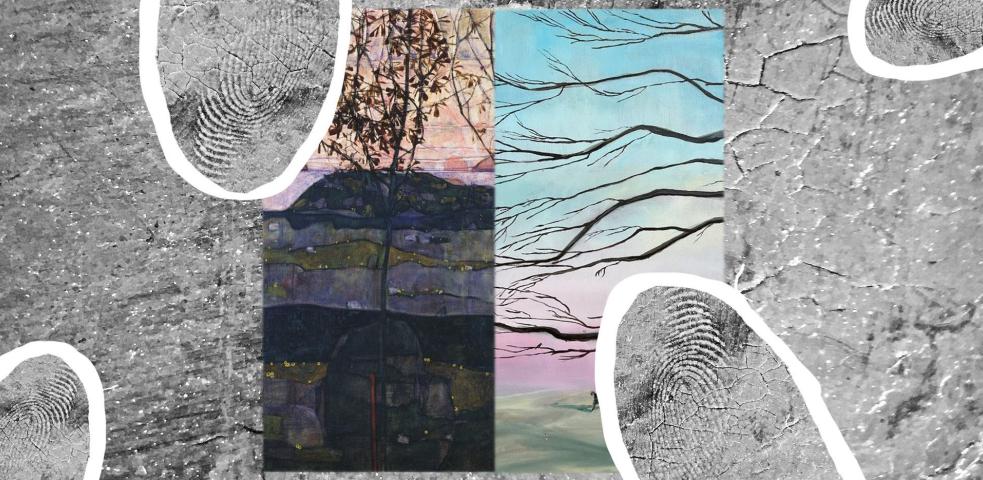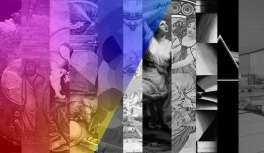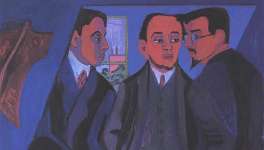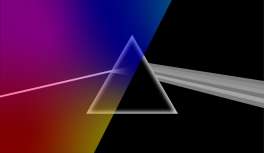Following the traces of #2 Egon Schiele and Judit Flamich
Rudolf Leopold was an ophthalmologist by profession and a passionate collector of Egon Schiele's paintings. He hunted almost manically for Schiele's works, regardless of whether they depicted landscapes or people. Leopold thus built up an enormous collection during the artist's lifetime. Today, the collection is on permanent display in Vienna's Leopold Museum. During a visit to the permanent exhibition "around 1900", I noticed a certain division of the works by genre and by level of recognition, which got me thinking.
Egon Schiele is primarily associated with his expressive, yet highly modern nude drawings, which were extremely provocative for the time, and is thus described as one of the first representatives of Austrian Expressionism. He is interpreted as a genius who transcribed his psychological and sexual desires into his art by means of eruptive and extreme gesticulation.
His oeuvre, however, contains a surprisingly large number of landscape paintings for an artist who was mainly concerned with the perception of the human body. In Schiele's work, these two genres merge in a subtle way, in which his landscapes usually display a harmonious blend of an Austrian view of nature and trees with an anthropomorphising character. In Schiele's landscapes there is an absolute absence of human figures, as the human is represented by the allegorical interpretation of vegetation. Schiele equates above all trees with man and his inner turmoil over loneliness, helplessness and threats to his existence.
Schiele began his art career with naturalistic, then impressionistic paintings that still functioned as pure depictions of his perceived surroundings. In 1909 the young artist reached a turning point with his painting "Sonnenblume II" (Fig. 1) as a first anthropomorphising design. The depicted sunflower, with its bent head, slightly crooked stem and leafy limbs, creates a distinctly dreary human effect.

A personal favourite is "Versinkende Sonne" (Fig. 2) from 1913, which hangs on permanent display in the Leopold Museum. The autumnal landscape depicts two small islands near Trieste, Italy, while the evening sun between them touches the horizon and seems to sink into the sea. The middle ground consists of dark green fields with scattered yellow flowers and a hill that harmoniously fills the pictorial space between the two islands. Immediately in front of the viewer are two chestnut trees whose loose, browned leaves hint at the autumnal season. Despite their height, the trees are held up by supporting sticks, which appear in many of Schiele's paintings and in some cases can be understood as a suggestion of the Christ-Cross relationship.
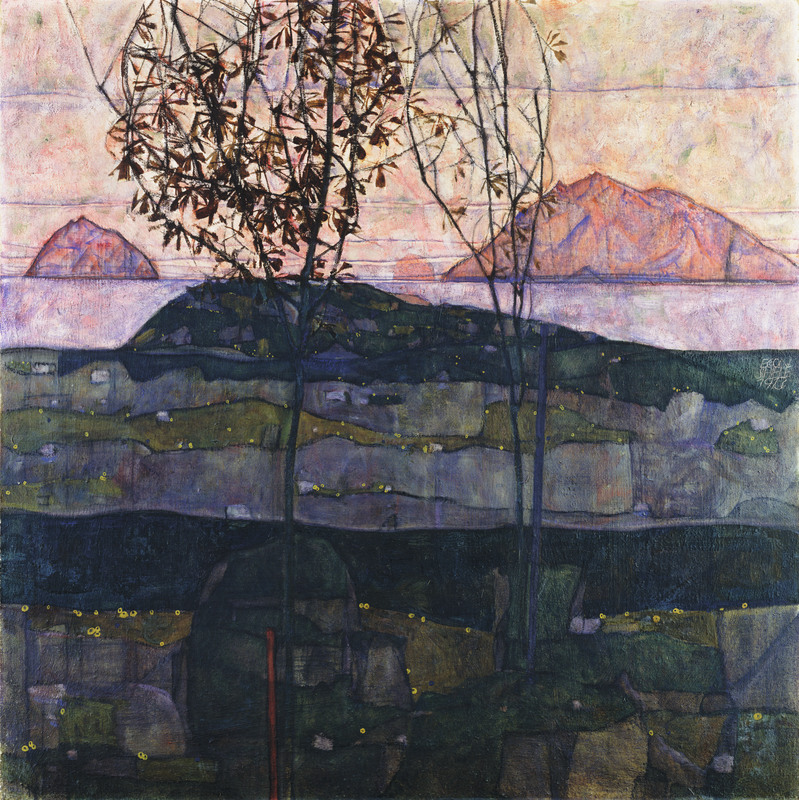
Rudolf Leopold explains in his book "Egon Schiele. Landschaften" on the basis of Schiele's correspondence that he painted this picture from April to the beginning of May despite the autumnal characteristics. This contributes to the hypothesis that he used the decay of the trees as a symbolic device rather than depicting the season.
The lines are characterised by angular, predominantly horizontal dynamics. According to Leopold, the almost scribbled lines are the "redemption of Schiele's earlier naturalism". The two chestnut trees striving strictly upwards, on the contrary, offer vertical clues to the almost perfect grid of the subject. If the horizon of the sea level, the centre line of the hill and the two trees are considered as dividing lines of the picture surface, the painting can be dissected into nine fragments of equal size. Instead of the usual warm, orange colour palette, cool pink and blue tones are used here, conveying a strong melancholy, comparable to Kolo Moser. The borderline situation of the sinking sun and the almost leafless trees gives allegories of emotional borderline states.
Although Schiele is known as one of the main representatives of German-Austrian Expressionism, his philosophy on landscape paintings reflects an affinity with Symbolism. Due to the fact that the two movements have some common grey areas, it is difficult in some cases to distinguish or differentiate between the individual pictorial works in stylistic terms.
As it emerges from this research, an artist's landscape art is in many cases neglected or considered inferior to other genres. Landscape paintings are essential in Schiele's case in order to understand his world view and closeness to nature. In this sense, I consider Schiele to be a great role model, as he uses the depiction of nature to project his own emotional state. Inspired by these thoughts, I have painted a series of landscapes, which I would like to present afterwards.
1. Archetype of solitude
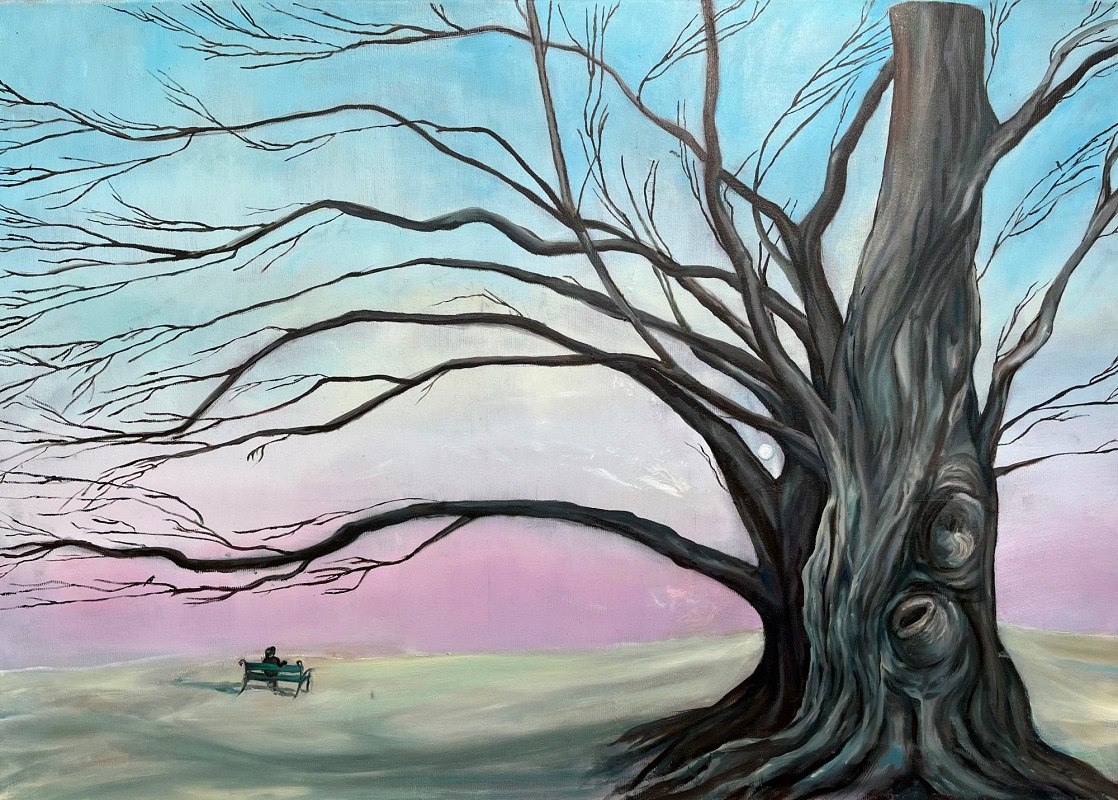
In the painting "The archetype of solitude" (Fig. 3), a gigantic Acer Macrophyllum towers over the lonely thinker on the park bench. Since the large branches of the maple are as yet adorned neither with blossoms nor leaves, the surrounding park disappears into oblivion and transforms into a spatial void that symbolises the idea of being trapped by his thoughts. Although Schiele's landscapes remained mostly deserted, for me the tree embodies a kind of allegory of the branching trains of thought.
2. Weidenbäume
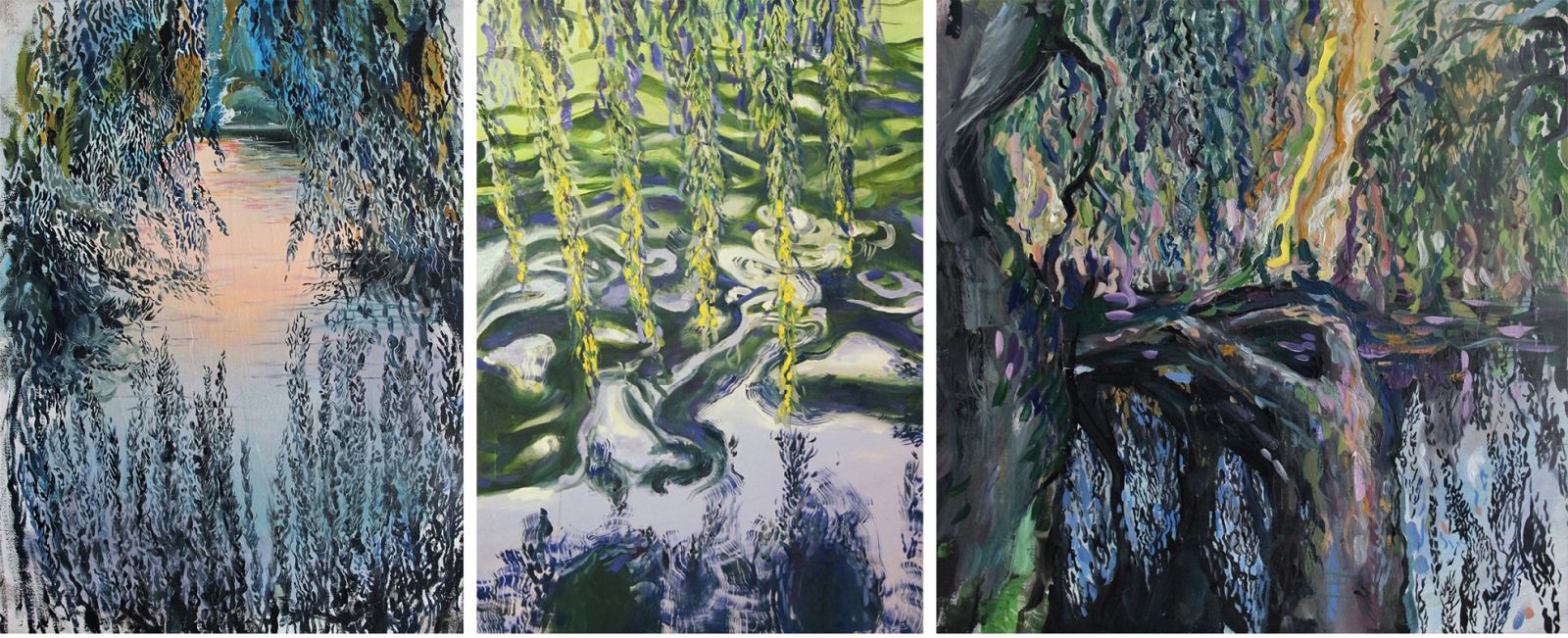
With its long, leafy arms, the willow tree (Fig. 4) offers a sense of shelter. When the branches gently touch the surface of the water, a blurred image reflects a different perspective. The rippling water of the pond in Türkenschanzpark (Vienna) and the arms blowing in the wind represent hope and restlessness, the eternal cycle of life.
3. Waiting for Spring
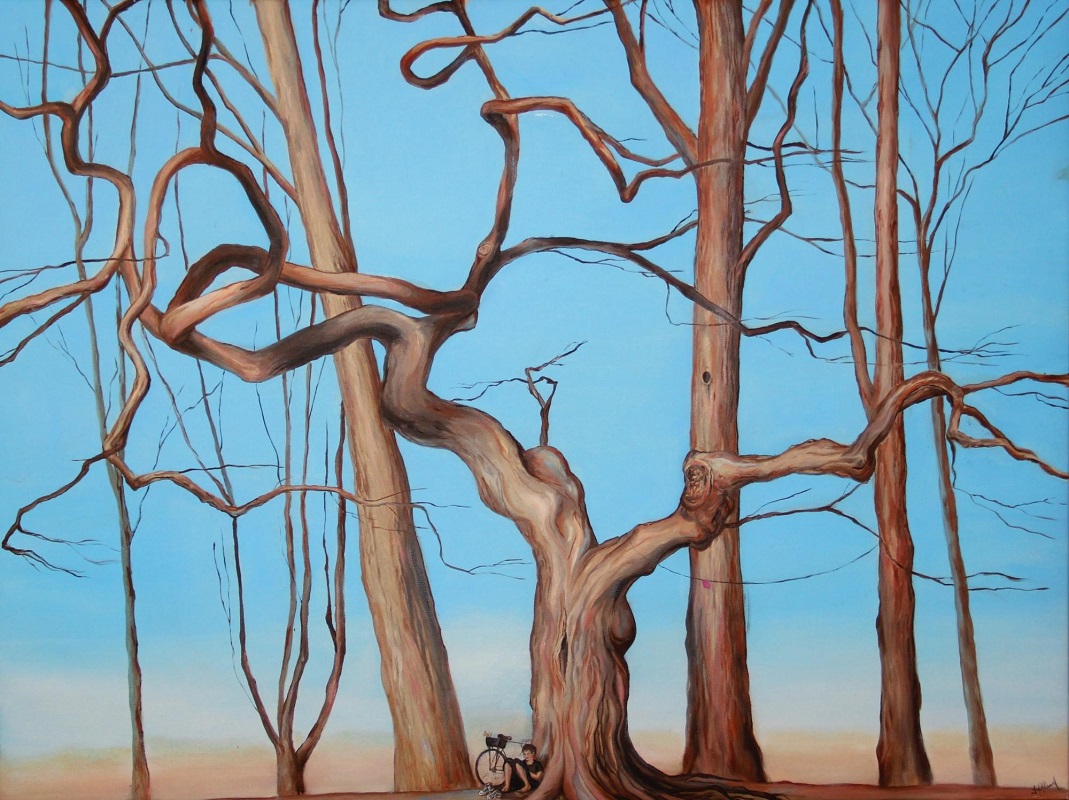
The bare tree (Fig. 5) makes one wonder what season the young person is in at all, asking for shelter under the missing foliage of the gigantic plant. The image represents the hope and restlessness that it will blossom once more. The fleshy trunk and branches desperately embrace the pictorial space, some of them upwards, others away from the rising pink sky.
Photo Credit:
Figure 1: Sonnenblume – Wien Museum Online Sammlung
Figure 2: Setting Sun – Leopold Museum Online Collection
Figure 3, 4, 5: ©Judit Flamich
If you would like to learn more about the artist and her works, you can access her art24 profile here.
